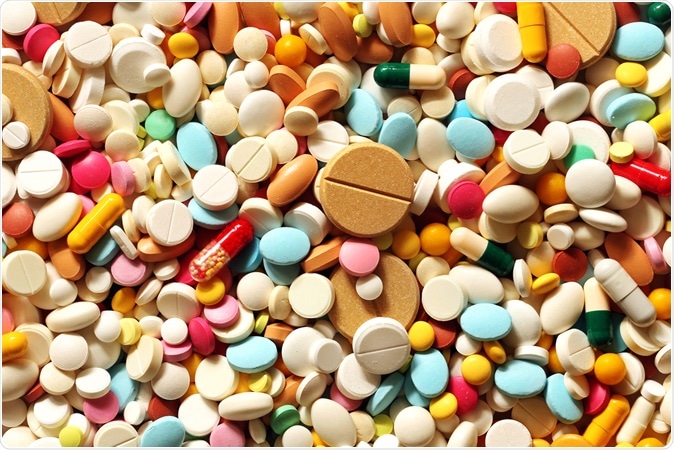Pills or oral medications contain inactive ingredients. Some of these may be responsible for the side effects says a new study. The study results appeared in an article published in the latest issue of the journal Science Translational Medicine.
The researchers explain that the allergic reactions to the pills may be due to inactive ingredients that make up the pill including lactose, gluten, food dyes etc. People who are allergic to these ingredients may experience worsening of their symptoms or allergic reactions.

Image Credit: Pavel Kubarkov / Shutterstock
Dr. Giovanni Traverso, from the department of gastroenterology at Brigham and Women’s Hospital and Harvard Medical School said that the results were surprising to the team of researchers. He was one of the authors of the study. He added, “. It involves almost every pill and capsule. And it’s something we tend not to think about.” Traverso is also part of the mechanical engineering department at MIT. He explained that the idea for this study came after a patient of Celiac disease presented with worsening of symptoms. The patient was not aware that the medication contained gluten, Traverso said and none of the prescribers were either. The team looked at other patients who had experienced similar side effects after taking the medication and found that several drug preparations could be harmful because of these seemingly innocuous ingredients.
In 2017, the Food and Drugs Administration had prepared draft recommendations to label drug formulations that contained wheat derived products. The FDA also has a database with the list of all the inactive ingredients in prescription drugs.
Daniel Reker, lead author of the study from Swiss National Science Foundation at Massachusetts Institute of Technology's (MIT) Koch Institute for Integrative Cancer Research in Cambridge, Massachusetts, said, “For most patients, it doesn't matter if there's a little bit of lactose, a little bit of fructose, or some starch in there. However, there is a subpopulation of patients, currently of unknown size, that will be extremely sensitive to those and develop symptoms triggered by the inactive ingredients.”
The team found that 44.82 percent of the pills contain lactose which can cause side effects among those who are lactose intolerant. Similarly 33 percent of the preparations contain food dyes. Around 3.8 percent of a study population was found to be allergic to a food dye called tartrazine. Complex sugars or FODMAPS (fermentable oligosaccharides, disaccharides, monosaccharides, and polyols), in the pills are found in 55 percent drug formulations. This can lead to symptoms of bloating, gas, abdominal pain, constipation and diarrhea. These sugars in the pills can worsen symptoms of irritable bowel syndrome or IBS. Other ingrediets include corn starch in 36.54 percent pills, polyethylene glycol in 35.8 percent pills, povidone in 35.8 percent pills and carboxymethylcellulose in 21.38 percent pills. Some pills also contain wheat starch, artificial sweeteners, peanut oil etc. Traverso said, “Many probably have amounts that are low enough that they wouldn’t induce a reaction, but in patients taking more than one medication they might pose a problem. For example, lactose is in a significant proportion of medications.”
Sravan Kumar Patel, a pharmaceutical chemist and an instructor of pharmaceutical sciences at the University of Pittsburgh Medical Center explained that the amount of these inactive ingredients is very small. He said, “If the required dose is 5 mg, that’s a really small amount and you can’t make a tablet out of that. So you mix it with an inactive ingredient such as lactose or dextrose and now you can make a tablet. It might not form into a tablet if you use something else.”
Authors conclude in their study, “Recognizing that the inactive portion of a medication, which corresponds on average to two-thirds of the administered material, may be more 'active' than previously anticipated, we foresee potential implications for medical protocols, regulatory sciences, and pharmaceutical development of oral medications.”
Source: http://stm.sciencemag.org/content/11/483/eaau6753